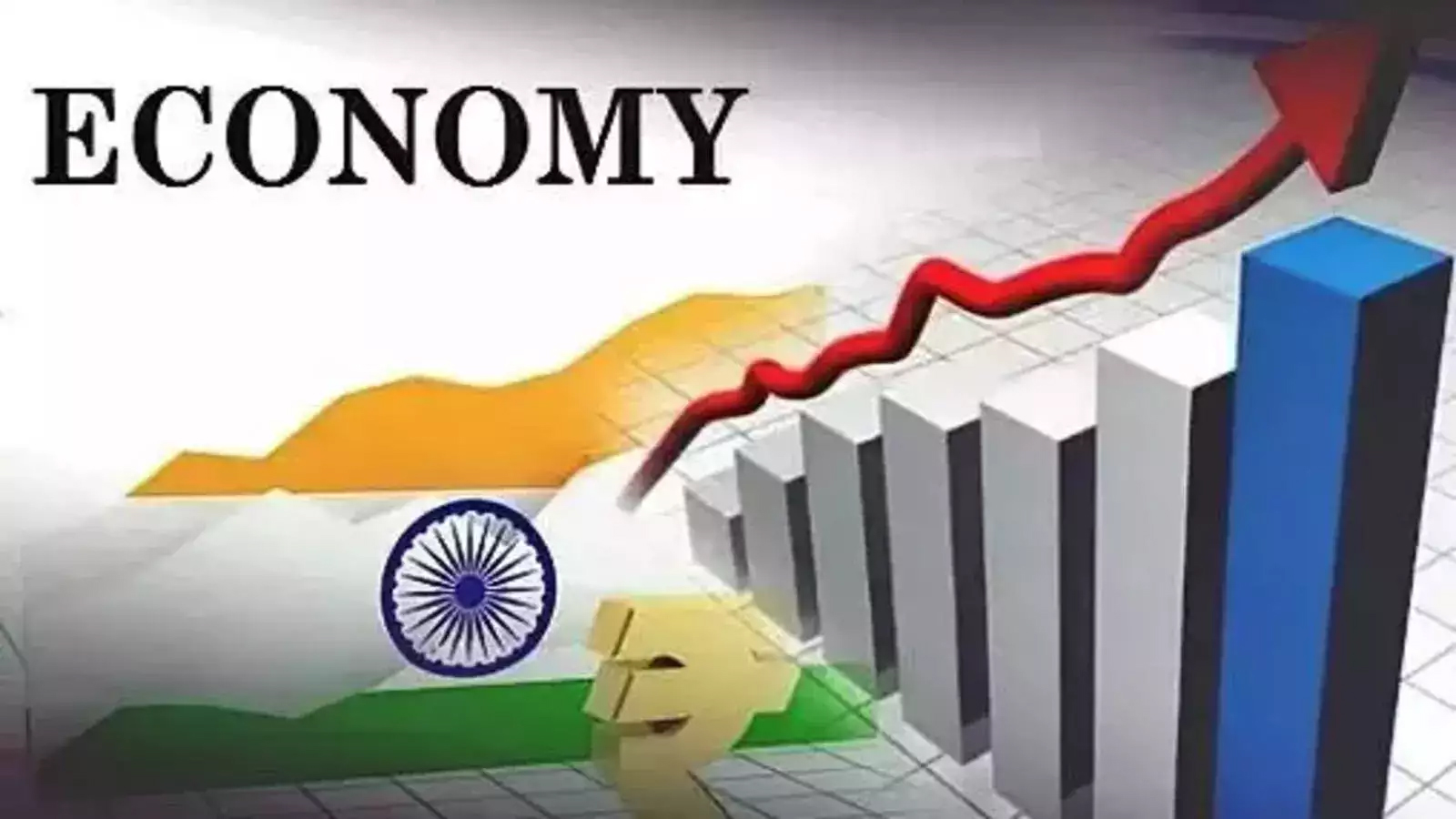This contrasting information led me to explore the country’s economic landscape, an area outside my expertise, to understand the truth behind these claims
 KRC TIMES NE Desk
KRC TIMES NE Desk

Dr. Bharti Gupta
As someone interested in India’s development, I was concerned when I heard criticism of the current government’s economic performance, despite India being the 5th largest economy in the world.
This contrasting information led me to explore the country’s economic landscape, an area outside my expertise, to understand the truth behind these claims.
A robust economic profile is essential for a nation’s progress and welfare. Since Prime Minister Modi’s announcement of making India a developed nation by 2047 through campaigns like Viksit Bharat and Amrut Kaal, there has been growing interest in the current status of India’s economy, its challenges, and opportunities.
There are narratives suggesting that the economy isn’t as strong as portrayed by the media, sometimes disparagingly referred to as “Godi Media.”
With a newfound interest in economics, I explored to compile a comprehensive overview of the key indicators crucial for understanding a country’s economic health. Some vital indicators and their relevance for evaluating India’s economic performance are as following:
Gross Domestic Product (GDP)
GDP measures the total value of goods and services produced within a country over a specific period. It is used to gauge the size and health of an economy.
In 2024, India’s GDP growth has shown robust performance, with an estimated real GDP growth of 8.2% for the fiscal year 2023-24, up from 7.0% the previous year ( Press Information Bureau).This growth is attributed to substantial private investment, high government capital expenditure, and resilient domestic demand.
Key sectors contributing to this growth include manufacturing, which contributes 17% of India’s GDP; and services, which performed steadily.
The GDP growth for Q4 of FY 2023-24 was 7.8%, positioning India as the fastest-growing major economy globally. According to Michael D Patra, Deputy Governor RBI, India has GDP of US $ 3.75 trillion and the Indian economy is on track to hit US $ 5 million by 2027 (India Briefing).
Per Capita Income
Per capita income divides a country’s total income by its population, providing an average income per person and gauging individual economic well-being.
For the financial year 2023-24, India’s per capita income is approximately ?2.14 lakh, up from ?1.72 lakh in 2022-23 (The Economic Times). Despite this increase, income inequality remains a significant issue, with substantial disparities in income distribution across different population segments.
There is tremendous scope for growth as India’s per capita income rises further and transitions to a high-middle-income country (Economic Survey 2023-24).
Unemployment Rate
The unemployment rate measures the percentage of the labor force that is jobless and actively seeking employment.
As of June 2024, India’s unemployment rate stands at 9.2%, up from 7% in May 2024, indicating ongoing economic challenges (Centre for Monitoring Indian Economy,CMIE).
There is considerable statewise variation, with Haryana having the highest rate at 37.4% and Odisha the lowest at 0.9% (studyiq.com). The national average points to broader structural issues in the job market that require policy and economic reforms.
Inflation Rate
The inflation rate measures the rate at which the general level of prices for goods and services rises, decreasing the purchasing power of a nation’s currency.
In April 2024, the retail inflation rate remains at 4.83% and this remains in the Reserve Bank of India tolerance band set at 2 to 6 % (forbesindia.com).
The Government of India establishes the inflation target in India under the Reserve Bank of India (RBI). While the Government sets an inflation target once every five years, the authority responsible for controlling inflation through monetary policies lies with the Reserve Bank of India.
Industrial Production
Industrial production measures the output of factories, mines, and utilities, reflecting the industrial sector’s health. India’s index of Industrial Production grew by 4.9% in March 2024 (Press Information Bureau), India’s industrial production showed varied growth rates across different sectors.
The manufacturing sector saw steady growth driven by domestic demand and export growth. The mining sector faced regulatory and environmental challenges but continued to contribute significantly.
The electricity sector experienced substantial growth, particularly in renewable energy generation,aligning with India’s commitment to reducing carbon emissions. Government initiatives like Make in India and the Production-Linked Incentive (PLI) Scheme have supported this growth (pib.gov.in)
Foreign Direct Investment (FDI)
FDI measures investments made by foreign entities into business interests in another country.
In FY 2023-2024, the total FDI inflows in the country is $ 70.95 Bn, and the total FDI equity stands at $ 44.42 Bn. The major sectors attracting FDI include services, pharmaceuticals, construction, and non-conventional energy, with significant investments from the Netherlands, Singapore, Japan, the USA, and Mauritius (investindia.gov.in).
The Optimistic prospects for future FDI are driven by India’s efforts to enhance manufacturing capabilities and favourable policies like the PLI (Production Linked Incentive) schemes.
Current Account Balance
The current account balance measures a country’s transactions with the rest of the world, covering trade in goods and services, primary income, and secondary income.
India’s current account balance posted a surplus for the first time in 10 quarters in the January-March period, helped by higher service exports and private transfer receipts (reuters.com) The current account surplus, opens new tab stood at $5.7 billion, and opens new tab 0.6% of the GDP, in the fourth quarter of the fiscal year 2023/24, compared with a deficit of $8.7 billion or 1% of the GDP in the preceding quarter (reuters.com)
“Services exports grew by 4.1% on a year-on-year basis in the fiscal fourth quarter on the back of rising exports of software, travel and business services,” (Reserve Bank of India)
Fiscal Deficit
The fiscal deficit is the difference between the government’s total expenditure and its total receipts (excluding borrowing), indicating the government’s fiscal health.
For FY 2023-24, India’s fiscal deficit stands at 5.8% of GDP, improved from 6.4% the previous fiscal year (pib.gov.in). This reduction reflects the government’s commitment to fiscal consolidation and improved revenue collection.
Ease of Doing Business Index
The Ease of Doing Business Index measures the relative ease of establishing and operating a business in different countries.
Department for Promotion of Industry and Internal Trade (DPIIT) is the Nodal Department for coordinating the initiatives under Ease of Doing Business which are aimed at creating a conducive business environment.
India ranks 63rd in the World Bank’s Doing Business Report (DBR), 2020 published in October, 2019 before its discontinuation by the World Bank. India’s rank in the DBR improved from 142nd in 2014 to 63rdin 2019, registering a jump of 79 ranks in a span of 5 years (pib.gov.in)
This progress reflects the government’s efforts to streamline regulatory processes, simplify business procedures, and create a conducive environment for business operations.
Initiatives like the Business Reforms Action Plan (BRAP) and legislative changes, such as the Jan Vishwas (Amendment of Provisions) Act, 2023, have contributed to this improvement.
India’s ongoing reforms and efforts to improve the business climate continue to position it as a favorable destination for both domestic and foreign investors.India’s economic landscape presents a complex picture of robust growth, significant challenges, and promising opportunities.
The nation’s GDP growth, strong per capita income increase, and substantial industrial production reflect its dynamic economic momentum. However, high unemployment rates, fluctuating inflation, and mixed FDI trends indicate areas needing policy attention and structural reforms.
The fiscal deficit reduction and improvements in the Ease of Doing Business Index highlight the Government’s commitment to economic stability and a conducive business environment.
As India strives to become a developed nation by 2047, sustained efforts in addressing economic disparities, enhancing job creation, and fostering inclusive growth will be crucial. By leveraging its strengths and addressing its weaknesses, India can continue to progress toward its ambitious development goals.




